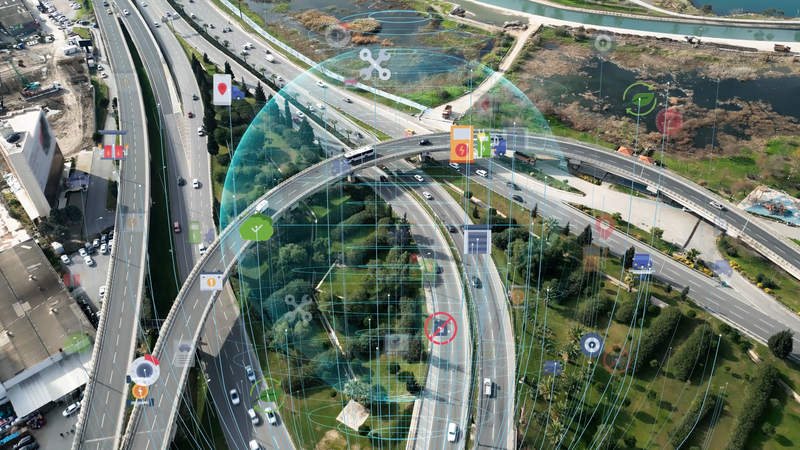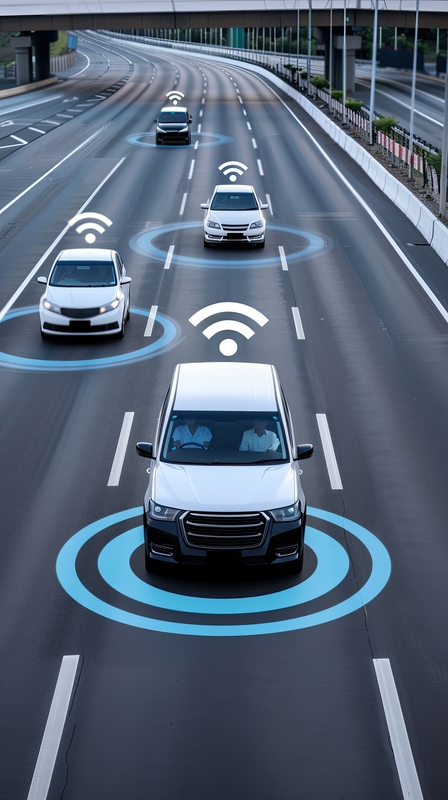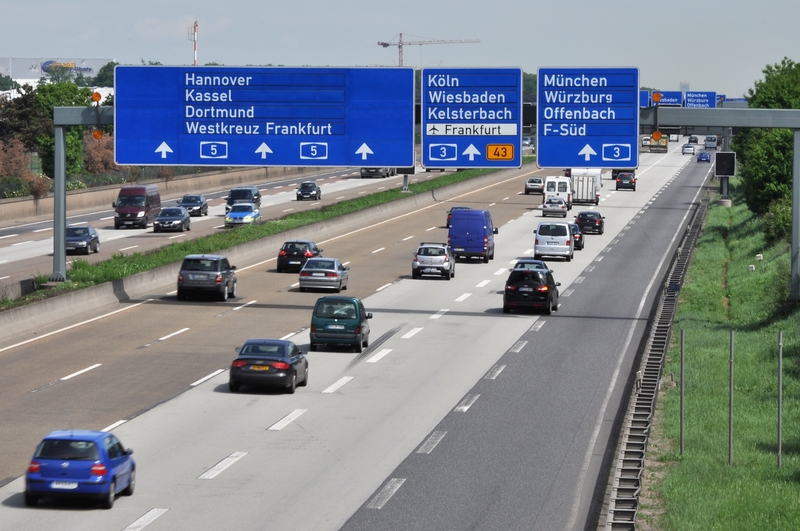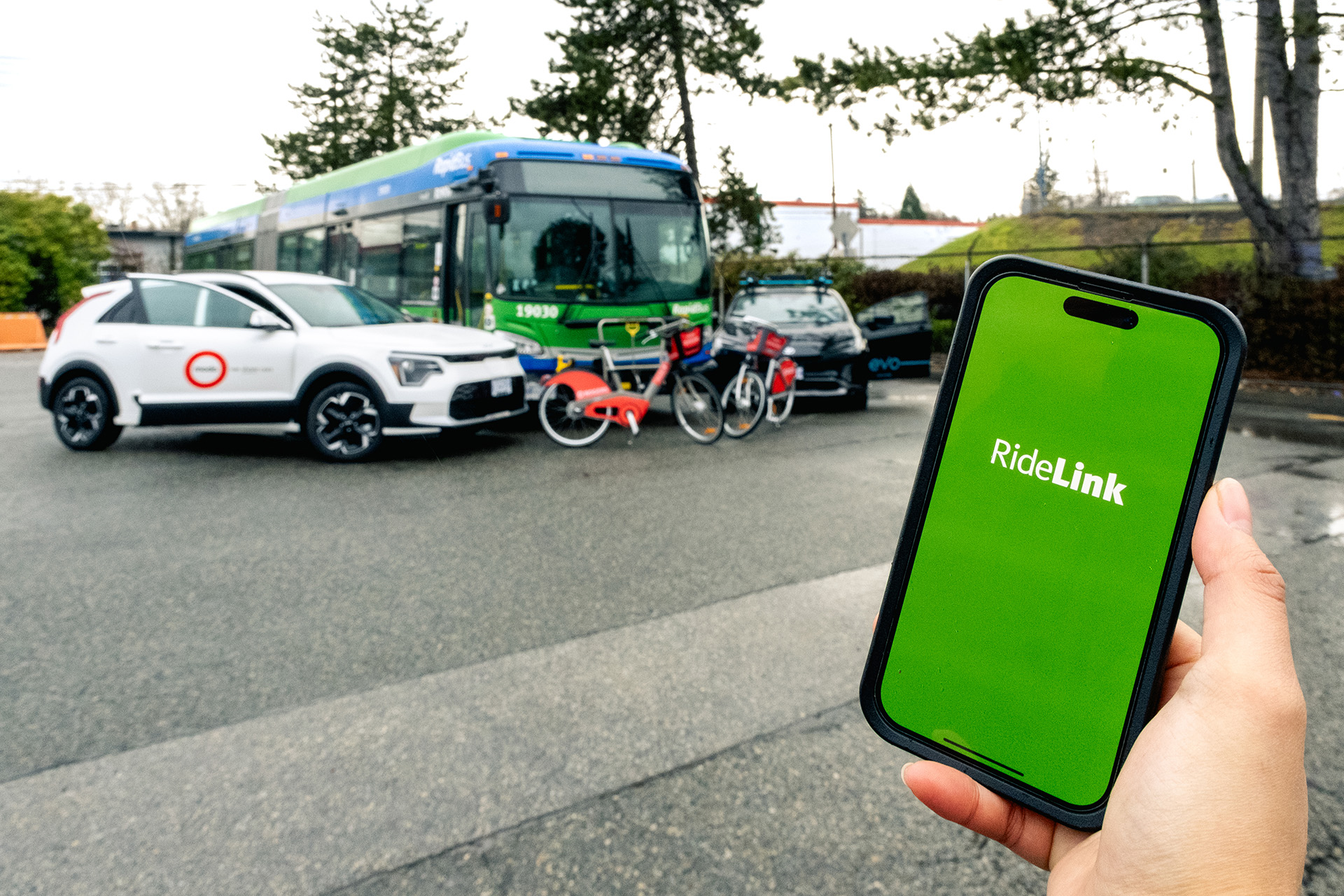
Europe’s road network is evolving fast. The benefits of intelligent transport are spreading at accelerating pace from road operators and between the most common nodes on the network – vehicles.
A recent series of C-Roads seminars laid out the current state of progress, implementations completed so far, lessons learned and plans for the future for the Cooperative Intelligent Transport Systems (C-ITS) initiative.
Driven by transport ministries in the European Union and beyond, the project brings together road authorities as well as infrastructure operators, supported by the major car manufacturers.
The task? To implement at scale the technologies and practices needed to enable cars to communicate road network information both between themselves and the network infrastructure they use.
The goal? Safety and efficiency. “Our vision is to increase road safety and traffic efficiency while reducing the environmental footprint,” says Niels Peter Skov Andersen, general manager, Car2Car Communication Consortium (C2C-CC), the European car manufacturers’ non-profit that now has other organisations including road operators as members.

Scaling up
It is an ambitious plan, says Martin Böhm, secretary general of the C-Roads Platform. “The aim is to link all our deployments across Europe to ensure that we have interoperability [whether vehicles are] travelling in Germany, Austria, Spain, Portugal or Sweden. European-wide C-ITS deployments are already a reality, thanks to cooperation between all the operators including cities, national road operators and, crucially, car manufacturers.”
Eighteen European countries are already in the process of deploying C-ITS services and eleven other countries in Europe and beyond are preparing to make the next steps toward C-ITS, says Böhm.
Progress continues to be made to further enable interoperability and grow the network, he adds. “Work is underway on technical specifications, defining how to use standards for C-ITS deployments, and for C-ITS use cases, as well as cross-testing to verify interoperability prior to operational deployment.”
The platform uses a hybrid communication mix that combines short-range communication, and direct communication using 5G as well as cellular networks for longer-range communication.
Getting the technology mix is only a small fraction of the work needed to ensure successful implementation, however, Böhm explains: “Connectivity is an enabler for C-ITS but really the willingness to co-operate, the trust in all the partners, the trust between all stakeholders, is one of the key elements.”
The journey so far
Recent generations of passenger cars have been capable of Vehicle to Everything (V2X) communication for a while now. VW has been a leader in this regard, deploying the first iteration of V2X in 2019 with the Golf 8, which had local hazard warning version 1.0 for incidents such as stationary vehicles, roadworks, accidents, emergency breaking and alerts for the end of traffic jams.
Other car brands have since joined with V2X capabilities and a second generation of local hazard warnings has also now launched, observes Jannis Fritz, in charge of function development and standardisation for V2X at VW. “Today we have over 1.3 million vehicles in 30 countries in Europe and our numbers are growing.”
The ability for vehicles to communicate real-time hazards to each other is a game-changer. “Vehicles equipped with V2X can send messages to our vehicles,” says Fritz. “Therefore we can warn the driver of unexpected situations for mainly short-term road works and guarantee the safety of road workers. Another feature is the emergency vehicle warning, which can warn our drivers when an emergency vehicle approaches and then the driver can react in time. So, for example, if you have a traffic jam, the driver can make some space for rescue vehicles. This use case is also possible in urban areas.”
“European-wide C-ITS deployments are already a reality, thanks to cooperation between all the operators including cities, national road operators and, crucially, car manufacturers” Martin Böhm, C-Roads Platform
The feature includes an arrow to provide a visual indication to drivers of the direction from which the emergency vehicle is approaching along with a distance estimation, adds Fritz.
Further implementations of these dynamic features include warnings of people, animals or obstacles on the road, adverse weather warnings such as strong winds, as well as visual obstructions and slippery road warnings.
Europe-wide interoperability with various stakeholders is growing, adds Fritz: “We already enable C-ITS use cases today across Europe in Denmark, Germany, Austria and Italy - and not only with highway infrastructure operators but also with fire brigades, police and the Austrian Red Cross.”
Adding additional infrastructure operators is currently a work in process, he continues.
Testing in Austria
Austria’s motorway operator Asfinag has already implemented these use cases and last year it was possible to test them in Austria for the first time, says Fritz. “We had immediate success in our tests. It worked at the first try and it is a great success that this is now already in operation in Austria.”
Asfinag has committed to deploying C-ITS everywhere on its 2,265km road network and began operational deployment in 2021. It currently has 367 operational roadside units on increasing to up to 550 units by the end of 2025, or one C-ITS road unit every four kilometres on average.
The first use case was road hazard warnings and use cases have been expanded since. The system is now capable of issuing warnings relating to roadworks, slippery roads, persons, animals or obstacles on the road, emergency vehicles approaching, emergency vehicle interventions, accidents, wrong-way driving, stationary vehicles and condition warnings.
Asfinag is also equipping road personnel with C-ITS capabilities, says Peter Meckel, the road operator’s programme manager, C-ITS: “We are putting C-ITS into every blue light and yellow light vehicle in our fleet.”
The yellow-light fleet consists of road maintenance vehicles, tolling enforcement vehicles and traffic manager vehicles. “These units disseminate emergency vehicle approaching and emergency vehicle intervention use cases automatically based on the status of the light signal,” Meckel explains. “They can also send out other hazardous location notification messages manually if triggered. We are also putting units in trucks and motorbikes where they are disseminating slow-moving road running messages.”

Germany’s fast track
Implementation of C-ITS is also gathering pace in Germany. Testing to enable vehicles to receive roadworks warnings began in 2021 and nationwide rollout of the service is underway. By the end of 2024, all maintenance centres in Germany will be equipped, amounting to around 1,200 safety trailers on the road sending out C-ITS messages.
Warnings in operation or soon to be implemented along the country’s motorway network include maintenance and emergency vehicle warnings, traffic jam ahead alerts and roadworks warnings. Some police vehicles are already equipped with C-ITS capabilities and a range of pilot projects to expand capabilities are in train, says Susanne Schulz, head of the Cooperative, Networked and Automated Mobility Department for Germany’s Die Autobahn.
“C-ITS is not only very valuable for road users, but also valuable for us as a road operator because we can get information from cars to get a really good overview about the traffic on the road” Susanne Schulz, Die Autobahn
“Our next step is also to contract our private companies in Germany that are safeguarding roadworks on motorways,” she says. “Our strategic goal is that we have services on the road to increase road safety and also the safety of our maintenance staff because they have a really dangerous job to do on the road. We want to do everything possible to save lives of our maintenance people and of course of other road users.”
One of the more advanced features of the C-ITS service on Germany’s autobahn network enables specially-equipped maintenance vehicles to roll along the hard shoulder to detect any damage on the road with light detectors that can then relay this information to the network.
An indicator of need for such C-ITS capabilities to be adopted both at scale and at speed from now is the fact that two out of four police cars equipped with emergency vehicle warnings have been written off in crashes. Presumably these may not have happened if more cars were equipped to receive dynamic traffic condition warnings, observes Schulz.
While improved safety is the main aim of C-ITS implementation, it is not the only one. The infrastructure being built out also provides valuable data that highways operators can use to enrich their own models and approaches to traffic management over time, adds Schulz. “C-ITS is not only very valuable for road users, but also valuable for us as a road operator because we can get information from cars to get a really good overview about the traffic on the road.”
C-ITS thus serves to improve both safety and the efficient use of the motorway network, says Schulz: “When we have less incidents on the roads, we also have more efficiency on the road.”
Lessons learned
Operators and manufacturers have learned much about the technical requirements that are enabling C-ITS to work in practice.
There are two important categories of communication to consider, says VW’s Fritz. One is the broad requirement to aggregate ‘back-end’, high data-rate communication between service providers - for example in order to facilitate the requisite online apps and map updates that are vital for providing communications about accidents, traffic jams and road works warnings.
The second category involves more time-critical use cases, such as emergency braking, post-crash or emergency vehicle warnings for vehicles following immediately behind an incident, when direct communication is necessary, says Fritz. “We really need low latency in these use cases. For us direct communication only fulfills the hard latency and quality requirements and it's the only technology that is permanently and freely available.”
C2C-CC’s Skov Andersen observes that the technical and data transfer requirements of car-to-car communications only represent a small part of the entire endeavour, however.
The real challenge is establishing how the constituent parts of the service work together, he says: “Connectivity is a necessity, but the real work is not the connectivity. Only 1% of our requirements are related to the communication, the rest are functional requirements -basically, how do we talk between the cars? How do we talk with the road operators? How to talk with bikes etc. This is why we need cooperation.”
“Our vision is to increase road safety and traffic efficiency while reducing the environmental footprint” Niels Peter Skov Andersen, Car2Car Communication Consortium
Communicating an apparently simple warning of roadworks, for example, is more complex than it may first seem. “The devil is in the detail, and this is where the cooperation comes in,” says Skov Andersen. “We need to be able to reflect in a proper way how such a road work is so we can send a proper warning. Say if lane is closed, what speed limits [need to be implemented]? It's just one example of the cooperation [needed].”
The central importance of standardisation is another clear lesson from implementation work done to date, says Schulz. “It's really important to have at least a Europe-wide standardisation so that you can use this technology when you cross borders. This overcomes communication silos because we have only one technology and it's working for everyone.”
Meckel agrees: “C-ITS is one of the only systems that can overcome the silo problems that others have where only certain service providers send out a service that is only received by certain drivers over certain channels and most importantly for us C-ITS operates in the safety area…messages received can also intervene in other vehicle systems. C-ITS is about the only system that provides a fully-harmonised ecosystem in Europe. We have standards, we have stakeholder groups, we have a dedicated bandwidth available, and we have the trust.”

The road ahead
Meckel adds that any deployment now realises instant benefits given the existing state of deployment and the attendant safety benefits: “C-ITS deployments create instant value even on the current level of support.”
Even very small commercial, off-the-shelf devices offer an instant use case for emergency vehicles, and it is not just the motorway networks that can benefit from C-ITS, adds Meckel. The urban use cases are already clear: “A lot of cities are replacing the proprietary systems which they use with C-ITS that has a lot of potential for future use cases.”
Further use cases include greater collective perception functionality, parking data, in-vehicle signage and signalised intersection capabilities. There are also growing incentives for car manufacturers to hasten C-ITS adoption. “We see that Euro NCAP recognises the value of direct communication, so starting in 2026 you get more points if you use both direct communication and cloud communication,” says Meckel.
Further out, as additional functionality gets added over time, it may ultimately lead to a future that supports fully-automated driving, adds Skov Andersen.
But today, operators can already demonstrate measurable safety benefits that will continue to accrue further over time, adds Schulz. “We have learned a lot from the services we have on the road today. We are very happy with the technology and that we can save lives.”
To watch all of the webinars in the C-Roads C-ITS series, subscribe to @c-roads4532 on YouTube












